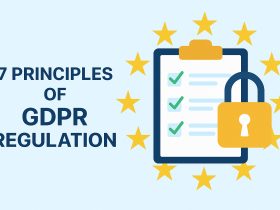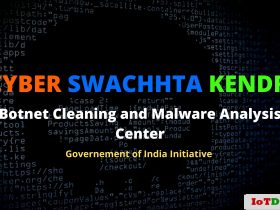Cloud Risk Management:
Introduction
The adoption of Cloud technology has exponentially grown over the years for the innumerable benefits that it offers businesses. Although Cloud solutions provide flexibility, and scalability for the business, yet it comes with certain challenges and risks for organizations. It is seen that most organizations looking to implement cloud solutions often express their concerns over risk management. The amount of risk exposure in the cloud environment is huge for the Cloud Users.
Due to the lack of visibility and control over the cloud infrastructure, organizations are often subjected to the risk of data loss, theft, data modification, and even incidents of a data breach.
So, organizations looking to adopt cloud services must take into account various possibilities of risk and threats their organization may be exposed to in the Cloud. Covering more on this in detail, we have listed out some of the most common security risks faced by the organization in the cloud environment. Let us take a look at these risks and how organizations can ensure effective cloud risk management.
Common Security Risks in Cloud Risk Management
Challenge of Data Security and Privacy
One of the most common challenges faced in the cloud environment is maintaining data security and privacy. Often due to lack of control and visibility of the Cloud Infrastructure, there is this constant threat of data security and privacy lurking in organizations.
Moreover, the risks of data security and privacy have now become a major concern with industry standards and regulations concerning data privacy and security enforced and mandated on organizations by various international governing and regulatory bodies.
Since a lot of consumer data is collected, stored, and processed by businesses around the globe, the risk of a data breach, loss, and theft is considerably high. It is observed that data breach in terms of security and privacy is the highest that is accounted for among organizations that most face challenges in the Cloud environment.
Due to the lack of control and visibility, the challenge of handling the data becomes a huge concern and matter of cybersecurity threat.
Preventive Measures
As preventive measures organizations must implement policies and procedures concerning data security and privacy.
This should include the implementation and enforcement of access controls, secure identity authentication, and encryption of data stored or in transit.
Such security implementation will prevent unauthorized access, data theft, or data breach.
Compliance Risks
Achieving and maintaining compliance can be quite a task for businesses in their industry. For these reasons, most companies prefer outsourcing parts of their operations to a third party.
Similar is the case with organizations adopting cloud services. While cloud solutions can be beneficial to organizations, ensuring they adhere to various compliance requirements can be challenging.
So regulations and standards like SOC2, HIPAA, or GDPR Compliance can be a daunting task to achieve. So, for instance, GDPR Compliance is the most comprehensive and stringent data privacy law that requires the implementation of certain security controls.
So, when an organization moves its data to the cloud, it is expected that the Cloud Service Providers also comply with GDPR regulations. If not organizations are bound to face heavy penalties.
Preventive Measures
The best way to go about this is by first looking for Cloud Service Providers who are GDPR Compliant. Organizations must thereafter conduct a thorough risk assessment to evaluate the risks and identify gaps against GDPR Compliance requirements.
Perform a Vendor Third-Party Risk Management to simply identify and control risks that a third-party Cloud Service Provider’s non-compliance poses to the organization.
Based on the assessment and evaluation reports high-risk vendors require additional follow-up, or in the worst-case scenario will require looking for another vendor.
Reduced Visibility and Control
When organizations outsource their operations to the Third Party Vendors like the Cloud Service Providers they have limited control and visibility over the infrastructure (software, systems, applications, and related assets) and its usage.
Although most businesses see it as a benefit for not having to manage the infrastructure and resources, yet from the security and compliance perspective it poses a huge risk.
It is challenging for organizations to monitor and track the access and usage of the cloud infrastructure and further verify the efficiency of the security systems.
Organizations will not have an in-depth insight into the infrastructure, network, data, and users traffic to identify abnormal patterns that can result in a data breach. Further, as a measure to address incidents of the breach, the organization cannot implement an incident response strategy as they do not have complete control over the cloud-based assets.
Preventive Measures
As a preventive measures organization must conduct a risk assessment to analyze the risk exposure they may be faced with in the future when collaborating with Cloud Service Providers.
Further, the organization must verify the security implementations and access controls measures in place to determine the effectiveness of security in the cloud. Also as an added measure, the organization must verify and confirm with the Cloud Service Providers the visibility and control they will have over the cloud infrastructure in which they plan to store and process sensitive data.
In addition to this organizations must also constantly monitor and track access to systems and data to get a better insight into your data, applications, and user access.
Cloud Migration
Cloud Migration is one of the major challenges organizations face when they plan to adopt Cloud solutions for their business operations.
The entire process of cloud migration which involves moving data, services, applications, systems, and other information and assets to the cloud can be overwhelming.
Since the entire process is tedious and time-consuming, there are higher chances of misconfiguration and errors in the setting and cloud migration process.
This can result in mismanagement of data and access, resulting in data exposure, unauthorized access, and/or even data theft. This is a very common challenge faced by many organizations when embracing cloud solutions.
Similar is the situation when organizations look to migrate from one cloud service provider to another. Overall they face extensive challenges including troubleshooting, speed, misconfigurations, security, application downtime, and similar issues.
Ultimately, this impacts the operations and services of the organization which results in a poor user experience.
Preventive Measures
Organizations need to take several measures to address or rather mitigate the risk or challenges of Cloud Migration.
The first step to this would be by analyzing the cloud requirements and the security risk exposures that organizations may face while migrating to the cloud. Thereafter the organization must consider a phased migration process whereby the data to be transferred in phases of shifting low priority data to the highest priority/ sensitive data with necessary testing at each stage including the settings, and configurations, and checking for bugs or gaps in security implementations.
Organizations must also consider implementing centralized monitoring systems to manage and keep a track of access to data stored in the Cloud.
Access Controls Management
Inadequate or poor access control and management can result in incidents of unauthorized access, data theft, data modification, or even data breach.
The chances of the organization being exposed to both external threats and internal threats are much higher with poorly protected credentials, poor management of admin accounts, weak passwords, poor management of passwords, encryption keys, etc.
This way business information and user data in the cloud may get greatly exposed. All of this can together will ultimately result in operational impact and reputation damage.
Preventive Measures
Appropriate Identity Access Management must be implemented to ensure authorized access and management of data.
Organizations must have a documented list of data control, access logs, and details of the user account to track and monitor traffic to systems and access to data stored on the cloud.
Having Access management and controls in place with centralized administration and monitoring will help detect suspicious activities.
Further, alerts for suspicious activities must be activated for taking immediate steps and actions to stay protected.
Insecure APIs
APIs in cloud infrastructure facilitate better controls over systems and applications. However, if the external APIs used are insecure, they can cause a huge amount of security threats to the organization and its data.
Such issues can lead to providing attackers an entry point to hack into the systems and gain access to confidential data that can be manipulated, destroyed, or even stolen.
Insecure APIs can result in security misconfigurations, errors in authentication, and authorization for access at functional level authorization.
All of this can further result in the exposure of confidential data, manipulation, and alteration of data, and ultimately also result in a breach.
Preventive Measures
As a part of Cloud Risk Management, organizations must ensure designing APIs keeping in mind encryption, access controls, and security authentication protocols to prevent significant risk exposure.
This step towards security will ensure a secure, and reliable API that hackers cannot exploit or hack. Maintaining good API hygiene will ensure high standards of security.
Further, as part of maintaining high-level security organizations must invest and implement high-end security solutions or perform a penetration test to determine vulnerabilities and fix them.
Organizations must also consider implementing security controls such as Multifactor Authentication such as biometrics, OTPs, Identity Access Management, and even implement TLS/SSL encryption for data transfer. This is to quickly identify API security risks and ensure Cloud Risk Management.
Conclusion:
Embracing cloud solutions can be a smooth process provided the implementation process is well planned. Although Cloud solutions provide an immense amount of benefits to the organization, yet considering the common security risks exposure is crucial for business.
Organizations must first consider Identifying and addressing risks before adopting cloud solutions for the business. Cloud Risk Management and security implementations should be prioritized with relevant policies and procedures supporting the implementation of security controls.
See also: The Impact of Cloud Computing in The Modern Era, is it safe?
Let us know what you know more about Risk management for cloud computing the comment section below.
If you like this post subscribe our YouTube Channel for IoT video Tutorials.
Start your IoT journey with IoT Basics from IoTDunia.
ABOUT AUTHOR:
Narendra Sahoo (PCI QSA, PCI QPA, PCI SSLCA, PCI SSFA, CISA, CISSP, CRISC, CEH, and ISO27001 LA.) is the Founder and Director of VISTA InfoSec, a global Information Security Consulting firm based in the United States, Singapore & India. He has more than 25 years of experience in the IT industry, with expertise in Information Risk Consulting, Assessment, and Compliance services.










Great Article, v useful to me